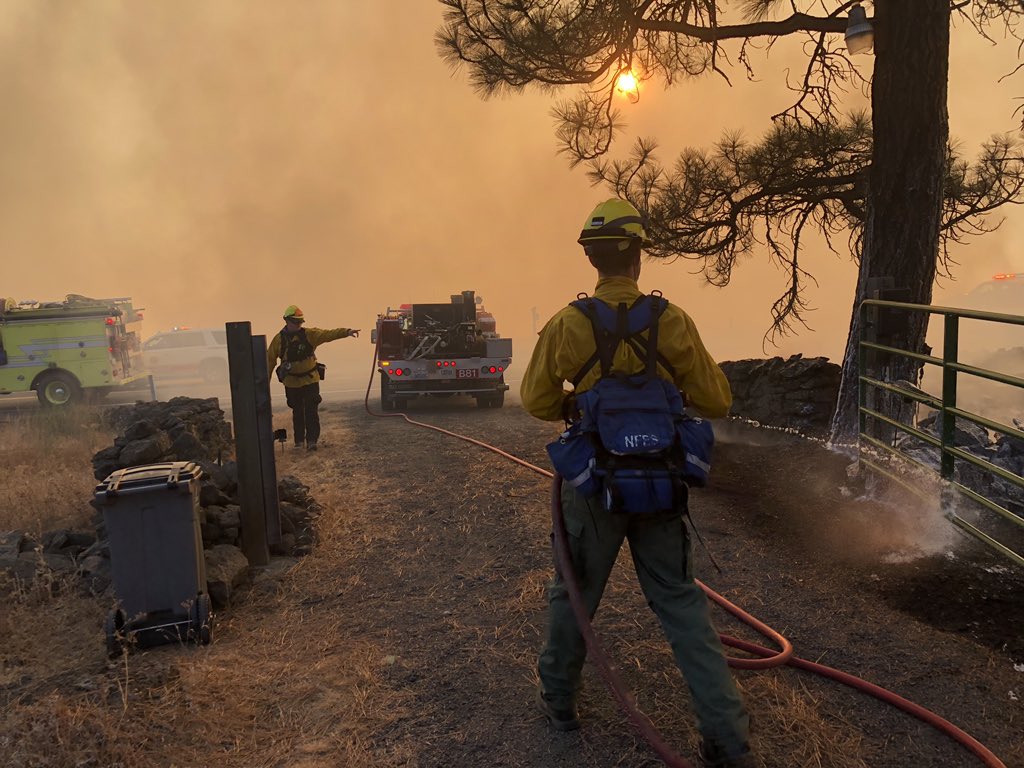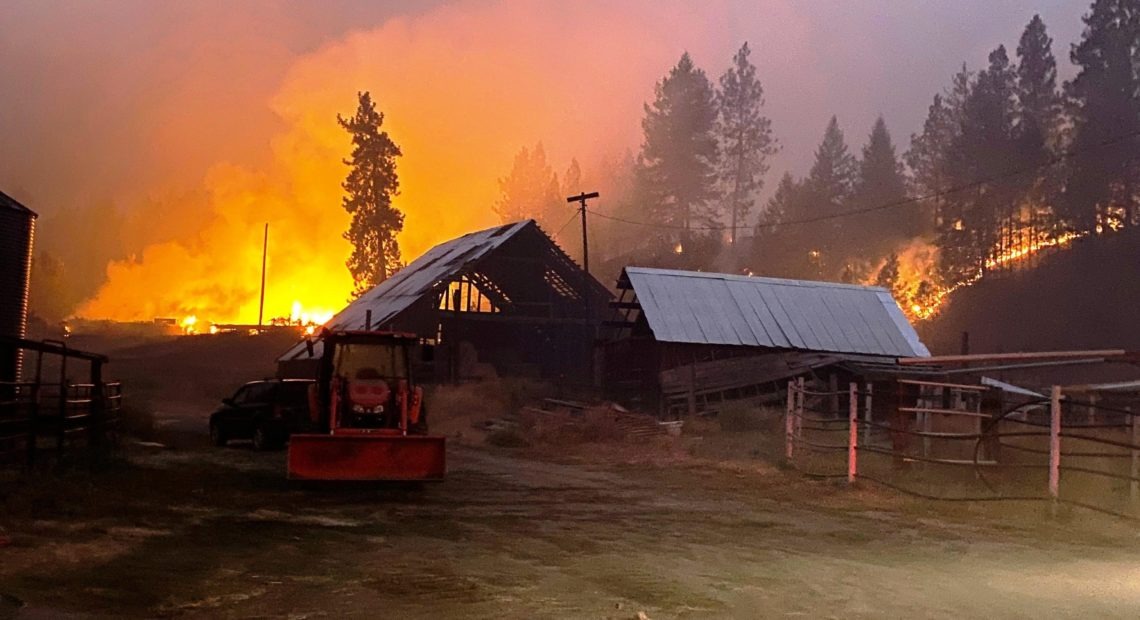
UPDATES: Crews Make Good Progress In Eastern Washington Fires; Hundreds Of Homes Burned
LISTEN
QUICK LINKS/INFO:
-Red Cross: 509-670-5331
-Fire Info: Cold Springs / Pearl Hill / Inchelium Complex
–Northwest Large Fires Map
–Washington DNR Fire Info (Twitter)
–Washington Smoke Forecast & Air Quality
BY ANNA KING, SCOTT LEADINGHAM & COURTNEY FLATT
Updated Sept. 16, 2020, 4:15 p.m.
Crews are getting a better handle on fires in central and eastern Washington. Since last week, the fires have destroyed hundreds of homes and other buildings.
Late night Sunday, Sept. 6, into Labor Day Monday brought with it strong winds and a spate of fires across Washington — largely in grasses, brush and rangeland, not forests.
More than a week later, some firefighting operations are winding down. Many crews are now in the process of putting out remaining hot spots in areas that have already burned.
Whitman County – Malden & Pine City
South of Spokane, in Whitman County, the Babb-Malden Fire burned through the town of Malden and smaller Pine City. It destroyed 121 homes, eight businesses and 94 other buildings. Another fire in the area, the Manning Fire, destroyed several homes and a historic 102-year-old covered wooden bridge across the Palouse River.
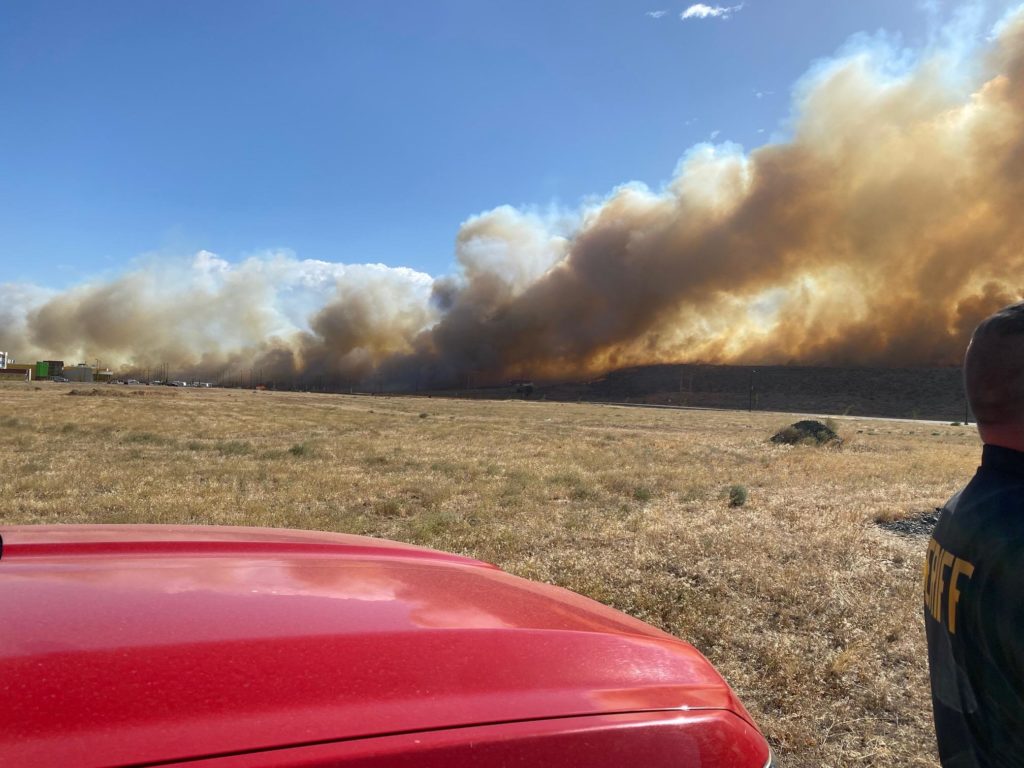
The Cold Springs Fire burns in Okanogan County on the reservation of the Colville Confederated Tribes on Sept. 7, 2020, near the 12 Tribes Casino in Omak. CREDIT: InciWeb
Colville Reservation – Inchelium And Cold Springs Fires
On the eastern side of the reservation of the Colville Confederated Tribes, at least 13 buildings have been destroyed in the ongoing Inchelium Complex.
On the reservation’s western side near Okanogan, the Cold Springs Fire destroyed 78 homes and 60 secondary buildings.
Douglas County – Pearl Hill Fire
Across the Columbia River, the Pearl Hill Fire in Douglas County destroyed at least 17 homes and 38 other buildings.
Previous Coverage, Sept. 13, 2020:
It’s been a week since an outbreak of wildfires began last Sunday night into Labor Day. Fires across central and eastern Washington quickly spread in high winds.
Now, crews are getting the upper hand. But very dry and critical fire conditions persist.
Two of the largest blazes, the Palm Hill and Cold Springs fires, burned hundreds of thousands of acres in a day – mostly in grasses and brush. They burned numerous homes in Okanogan and Douglas Counties.
More than 600 people are currently assigned to both of the incidents, separated by the Columbia River.
In what fire managers call a double-edged sword, the thick blanket of smoke that inundated the Northwest over the weekend made for better firefighting conditions. While helicopters and water-dropping planes couldn’t fly as much due to low visibility, the smoke helps keep air temperatures cooler by filtering sunlight. It also helped keep relative humidity levels higher, which is good for fighting fires.
“So those factors are definitely a benefit to our crews on the ground. And they’ve taken full advantage of it,” Cold Spring Fire public information officer Jeff Sevigney said Sunday night.
Decreasing winds and more favorable temperatures have allowed crews in north-central Washington to get a leg up on building containment lines.
“A lot of the operations now are going to shift toward mop up and rehab operations that we’re going to be helping out with,” he said.
He says the focus this week is on the east side of Omak Lake.
“But crews have been making excellent progress, and I think we’re well on our way there,” Sevigney said.
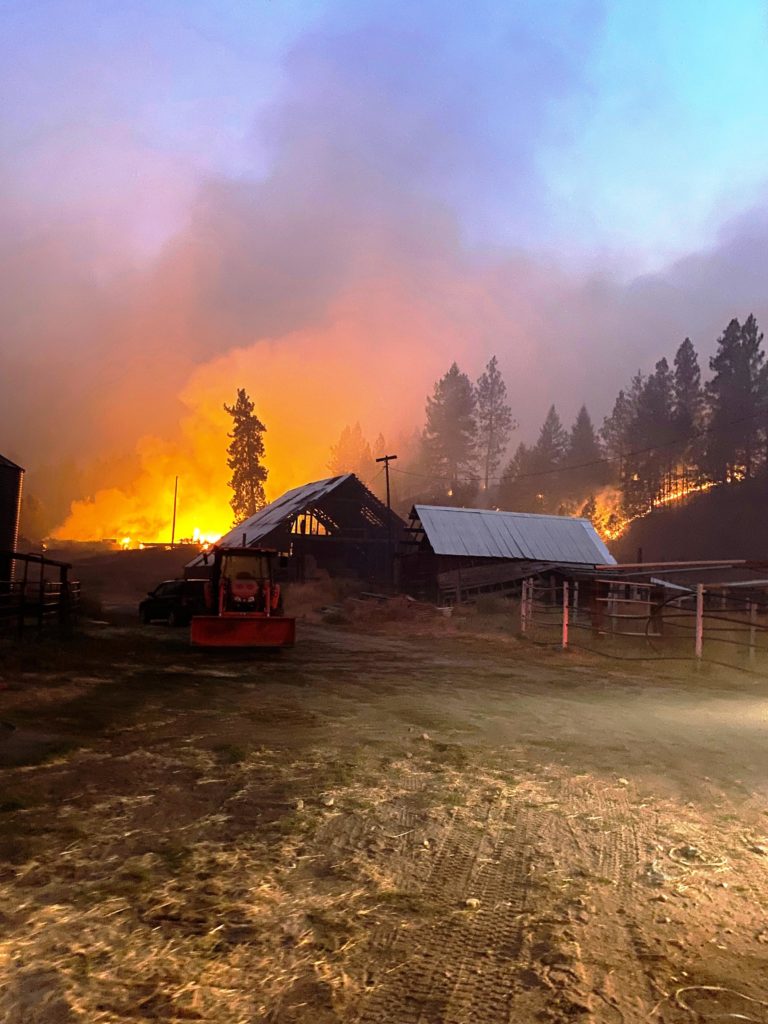
The Inchelium Complex, comprised of three smaller fires, is burning in timber and grasslands on the eastern side of the reservation of the Colville Confederated Tribes, shown here on Sept. 12, 2020. CREDIT: InciWeb
The investigation is ongoing about how the fire started near Omak. A 1-year-old child died while his parents were trying to escape with him. They were found near the Columbia River and airlifted to a Seattle hospital with severe burns.
The parents, Jake and Jamie Hyland, from Redmond, Washington, are recovering and still in the hospital. Their family has set up a GoFundMe fundraiser with a $300,000 goal for medical expenses.
The Cold Springs Fire, on the western side of the reservation of the Colville Confederated Tribes, is getting closer to containment after burning nearly 190,000 acres as of Sunday.
Another set of fires, called the Inchelium Complex, has burned more than 18,000 acres on the reservation’s eastern side. It’s burning in heavier timber and steeper terrain and is likely to take longer to fully contain.
Previous Coverage, Sept. 11, 2020:
More acres have burned in Washington over the last five days than almost any other total fire season. That prompted Gov. Jay Inslee to call today for efforts to fight what he says is the fundamental problem: climate change.
Inslee called Washington’s recent fires “climate fires.” He says conditions caused by climate change are contributing to fires across the state. Forests on the west side of the state are extremely dry. He says climate change is stoking large rangeland fires east of the Cascades.
“It’s like we’ve had this pouring gasoline all over the state of Washington and then being surprised when we have giant fires,” Inslee said during a Friday news conference. “That gasoline is climate change.”
Inslee says these conditions are becoming much more frequent in Washington. He called for more clean energy jobs to help fight climate change. He also continued to support a clean fuel standard that would limit the amount of heat-trapping carbon coming out of vehicle tailpipes.
Not Coordinated Arson
Also on Friday, officials addressed the social media rumors and disinformation campaigns suggesting fires are being intentionally set as part of a coordinated effort.
Washington State Patrol Chief John Batiste said troopers have arrested two people in Pierce County for setting fires, but each person acted alone.
Unfounded rumors and intentional disinformation campaigns have spread this week over social media, especially on Facebook. They claim fires that started over Labor Day weekend were coordinated by far-left or far-right extremists. Batiste says that is not true.
“We have no knowledge of that, Batiste said. “We have not been able to discover any of that in conversations throughout the fire community and amongst law enforcement.”
Enforcement officers saw both of the people who were arrested setting fires in Pierce County. Sheriffs offices have asked people to stop spreading rumors about coordinated fires. It can clog important resources, like emergency dispatchers.
The FBI has also debunked claims that extremists have intentionally set wildfires in Oregon.
Previous Coverage Sept. 10, 2020:
Washington Gov. Jay Inslee toured the remains of Malden in Whitman County Thursday, a day after state public lands commissioner Hilary Franz was on scene. About 80% of the small farming community and nearby Pine City burned during a fast-moving Labor Day fire.
Around 940 square miles of wildfires have burned in the state this week. Inslee said the past three days have been “the worst few days in wildfire history for Washington state.”
He said the state is already responding to the losses in Malden and Pine City. Inslee repeated that this week’s swarm of wildfires is the result of climate change.
So far, 2020 has the second highest number of wildfires in recorded state history.
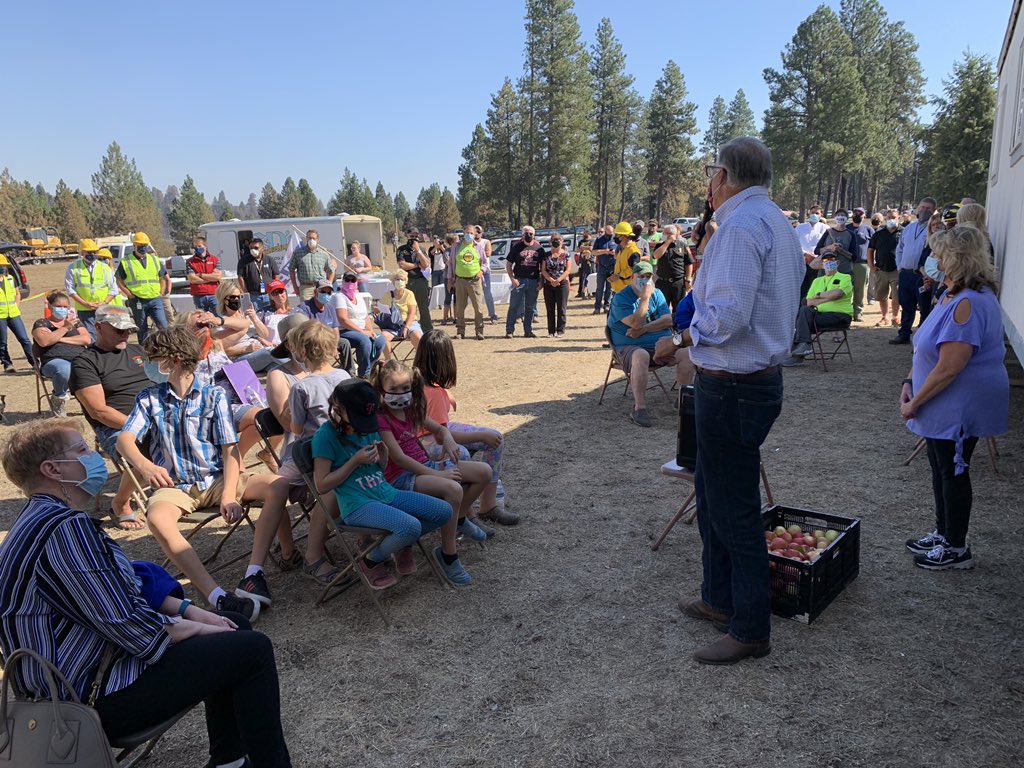
Washington Gov. Jay Inslee toured and spoke to residents of Malden on Thursday, Sept. 10, three days after a fire destroyed much of the small Whitman County farming community. CREDIT: Governor’s Office
Smoke Forecast Not Good
If you were hoping for a break from smoky skies this weekend, there’s some bad news on the horizon. Winds are predicted to blow inland – and with them comes a lot of smoke.
Hazardous air conditions east of the Cascades gave way earlier this week, as winds pushed smoke out to sea. But soon, winds coming from the west and southwest are predicted to send it back. The smoke will last through the weekend.
That could mean unhealthy and even hazardous air quality for parts of Washington, including the Columbia Basin and Spokane, central Oregon and North Idaho.
SEE MORE: Washington Smoke Forecast And Air Quality
The National Weather Service says light winds and an inversion will keep smoke close to the ground – and easier to breathe in.
In many areas, it will be harmful for people to be outside, especially people with heart and lung conditions. Smoke is also a concern for people who have COVID-19 or are recovering, according to the CDC. Health officials say people should limit outdoor activity.
The weather pattern may change early next week, when temperatures are also expected to drop.
Here’s the forecast we’ve been dreading: A huge mass of smoke from wildfires in OR and CA has been building up off the coast. It’s now headed our way. W. WA, SW WA, the Columbia Basin and Spokane will wake up to “unhealthy” air quality Friday. Forecast – https://t.co/IssTBsWkU9 pic.twitter.com/THDjf3VvUp
— WA Department of Ecology 😷 (@EcologyWA) September 10, 2020
Previous Coverage, Sept. 9, 2020:
With firefighting resources stretched thin across the Northwest, two large fires are burning on either two ends of the reservation of the Colville Confederated Tribes.
The Cold Springs Fire has forced evacuations and has burned multiple structures. Crews led by the Northeastern Washington Interagency Team are still figuring out how many buildings have been destroyed.
On Wednesday, KXLY-TV reported a young family visiting from Renton, Washington, had become trapped by the flames in Okanogan County. Their truck was found near the Columbia River. The parents, Jake and Jamie Hyland, suffered severe burns and were airlifted to a Seattle hospital. Their 1-year-old child Uriel died.
The Cold Springs Fire has burned more than 163,000 acres around Omak and Okanogan since taking off in windy conditions Sunday night into Monday. Aircraft helped put out flames Wednesday after being largely grounded on Monday because of the hazardous flying conditions.
But crews are spread thin, according to spokesperson Don Malone.
“Due to all the fires around our region, we definitely are thin on resources. I think every fire around the region is, due to the magnitude of them,” Malone told NWPB Wednesday afternoon.
Another set of fires on the eastern side of the reservation is also short on crews. The three fires in the Inchelium Complex are burning in timber and brush near the other side of the Columbia River, which hugs the reservation on two sides. Crews led by the Colville Tribes’ fire agency, Mt. Tolman, have been able to move from mostly structure and resource protection to now improving containment lines.
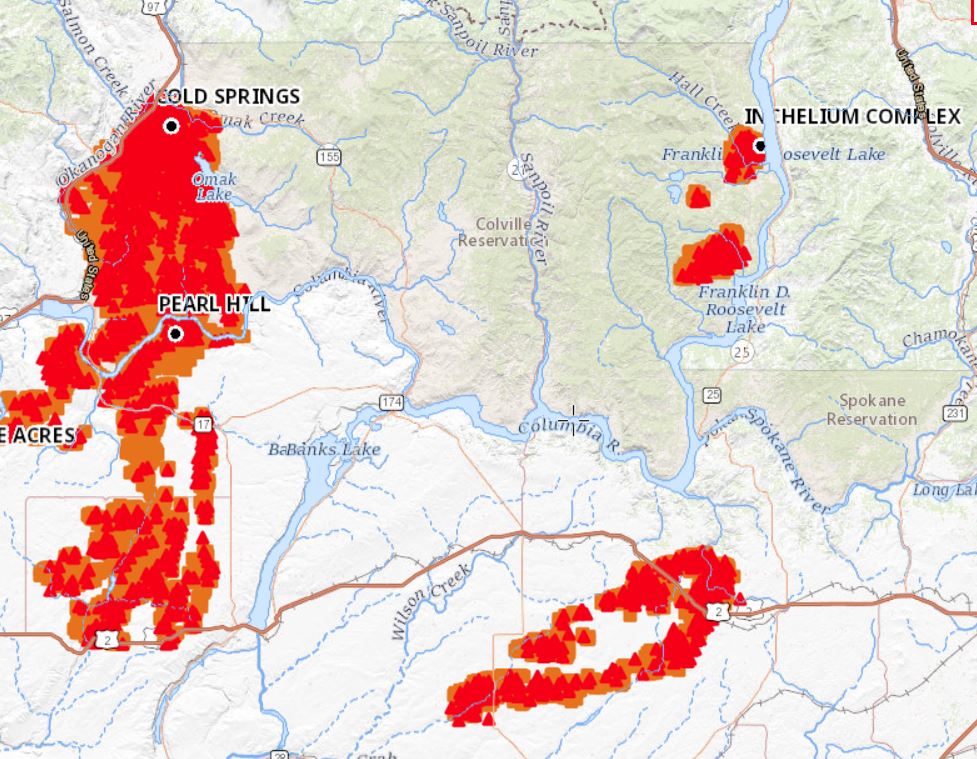
The reservation of the Colville Confederated Tribes is bound on several sides by the Columbia River. The Cold Springs Fire spread across its western side on Labor Day 2020, while smaller timber fires broke out around Inchelium on the eastern side. This approximate fire map shows heat sources from early on Sept. 8, 2020. CREDIT: GIS Surfer/MappingSupport.com
Previous Coverage, Sept. 8, 2020:
Emergency responders and fire crews are attacking numerous fires that began early on Labor Day and continue burning in eastern and western Washington.
Nearly 300,000 acres have burned in the state in under 48 hours. The largest complex, the Cold Springs and Palm Hill fires in Okanogan and Douglas counties, have displaced hundreds of people.
Another fire that began in Spokane County and burned fast into Whitman County devastated the small town of Malden.
Gov. Jay Inslee expressed sympathy for residents during a Tuesday afternoon press briefing.
“We want the people of Malden to know we stand with you. I will probably be there Thursday (Sept. 10),” he said. “We’re looking for every possible help we can render as quickly as we can for the traumatized people of that community.”
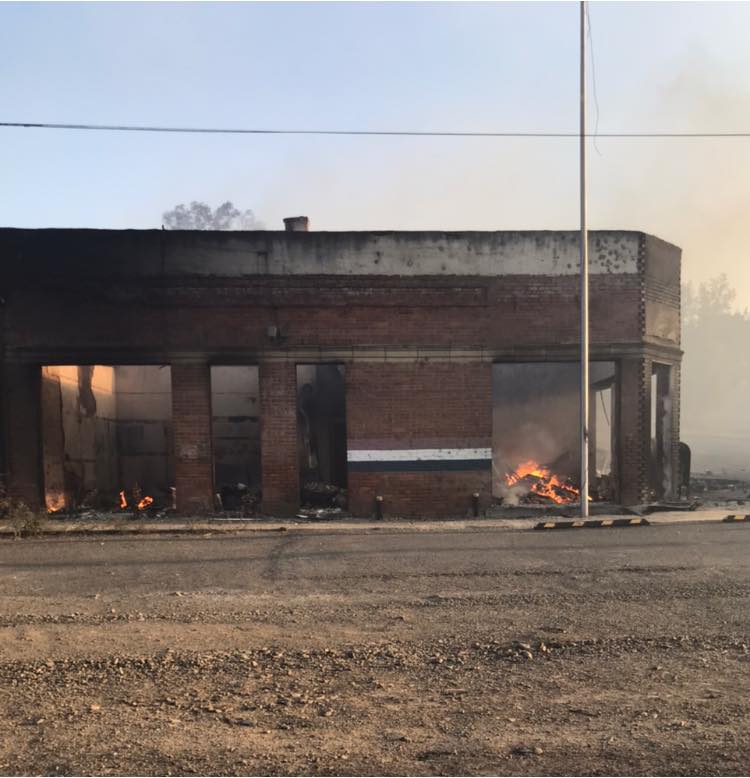
The post office in Malden, Washington burned during a fast-moving wildfire on Sept. 7, 2020, along with much of the rest of the small Whitman County town. CREDIT: Whitman County Sheriff’s Office
Inslee was joined by state Commissioner of Public Lands Hilary Franz. They both said the fires are not only an issue for the east or west side of the Cascades, but something that affects the entire Northwest.
“The list of the fires is long,” Inslee said. “The whole of the state of Washington state is connected to the trauma of these fires right now.”
Franz noted that while 90% of fires in the state are caused by human activity, the specific causes of these fires are being investigated.
The Department of Natural Resources, which Franz leads, has closed state-managed recreation areas in eastern Washington through Friday, Sept. 11 due to the current fire threat.
Emergency officials urged all people driving to never throw cigarette butts from cars, and to check tow chains to prevent dragging and causing sparks.
Franz said it’s not yet known whether any fires were intentionally set.
She told the Northwest News Network on Tuesday that the next couple of days will bring more challenging wind conditions for firefighters and air support.
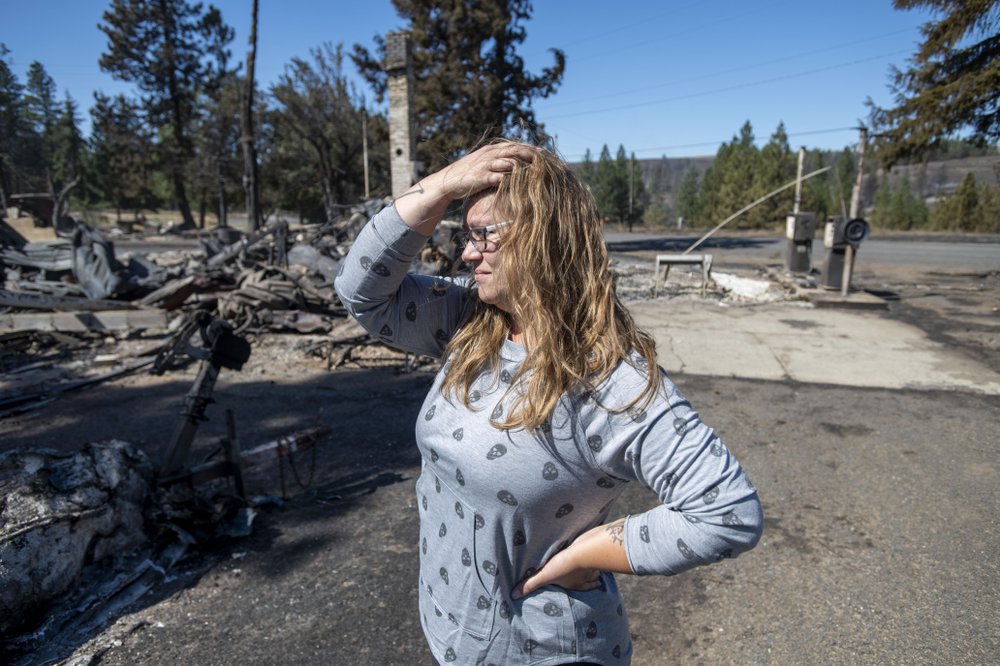
Hollie Jordan surveys her father’s service station that was destroyed by a wildfire on Tuesday, Sept. 8, 2020, in Malden, Wash. “This was filled with work and life and memories and it’s all gone,” Jordan said. CREDIT: Jed Conklin/AP
“Maps of Washington state show extreme fire danger in pretty much almost every corner of the state both east and west,” Franz said. “And it’s projected that will carry through for at least the next 48 hours.”
Franz hopes conditions will break by Friday.
Previous Coverage, Sept. 7, 2020:
Labor Day 2020 lived up to its name if you’re a firefighter. It was a day that set up for numerous fires in central and eastern Washington that have burned tens of thousands of acres, and possibly many more.
At least 80 fires started in Washington in what officials call a historic fire event.
The Whitman County town of Malden, population about 200 people, was largely destroyed from a fast-moving fire.
The fire was at the Malden city limits about 1:30 p.m. Monday. An hour later, the entire town was engulfed, according to Whitman County Sheriff Brett Myers.
“And when you have winds blowing 45 to 50 mile-an-hour and you have dry timber, dry grass everywhere, and a fire that’s consuming almost everything in its path … It’s definitely a scary situation,” Myers told the public media Northwest News Network Monday night.
Total devastation in Malden, where an estimated 80% of homes were destroyed by a wildfire Monday. The Whitman County Sheriff’s Office shared these drone pictures with our @DstnyRichardsTV. #4NewsNow #WaWILDFIRE pic.twitter.com/2OVWES3Lkp
— 4 News Now (@kxly4news) September 8, 2020
Gov. Jay Inslee will hold a 2:30 p.m. news conference Tuesday with state emergency response and public lands officials to address the ongoing fire response. Watch live here.
Cold Springs Fire
Additionally, multiple large fires across Okanogan, Douglas and Chelan counties prompted hundreds of evacuations.
The fires started spreading across the state in the early morning, and kept running. The Cold Springs Fire burning in Okanogan and Douglas counties ran an estimated 60 miles north to south in just about 20 hours.
“In my 34-year fire-management career, I haven’t seen anything like that,” said Russ Lane, a fire manager with the Washington State Department of Natural Resources. “Really our actions are limited to keeping people out of harm’s way and working the edges of the fire as best we can.”
Lane says Monday was a “frustrating day” for firefighters who have had little air support. Planes and helicopters have been grounded because of the strong gusts, blowing smoke and sand.
The impact of the Cold Springs Fire on the towns of Bridgeport and Mansfield was still being assessed late Monday night. Both towns faced Level 3 “Get Out Now” evacuations on Monday.
I’m sick, the amount of new fires today is unreal. Early estimates figure 288K acres burned today across the state. Numerous homes and property destroyed, 30K+ without power. Every one of these was 100% human-caused and therefore 100% preventable. #WaWILDFIRE #wawx pic.twitter.com/RJDFXpoJyE
— Josh Clark (@wafiremet) September 8, 2020
Perfect Storm
It was the perfect storm of conditions – and not in a good way.
First, it’s been extremely dry in the past month. All those fuels have been ready to burn for weeks. Second, the recent above-average temperatures primed the pump. Then on Labor Day came strong winds out of the north that ensured any current fires or new starts would take off fast. And that is exactly what happened.
These are the kinds of conditions that made 2014 and the Carlton Complex and 2015 for the Chelan and Okanogan Complex fires so bad.
To cap things now, the Evans Canyon Fire in central Washington was already stretching fire resources statewide heading into the weekend – having burned nearly 75,000 acres in less than a week, with nearly 800 personnel assigned to the fire ahead of the Labor Day weekend. The past several weeks have seen numerous massive fires not just in Washington, but across the West, especially California.
In response, the fire preparedness level for the Northwest was raised to a level 5 – the highest possible level.
Washington Gov. Jay Inslee declared a statewide emergency Aug. 19 due to critical fire danger, activating National Guard resources.
This is a developing story and will be updated.
Anna King is a regional correspondent for the public media Northwest News Network. Courtney Flatt, based in the Tri-Cities, covers environmental and natural resource issues for NWPB. Scott Leadingham is NWPB’s news manager.
Related Stories:
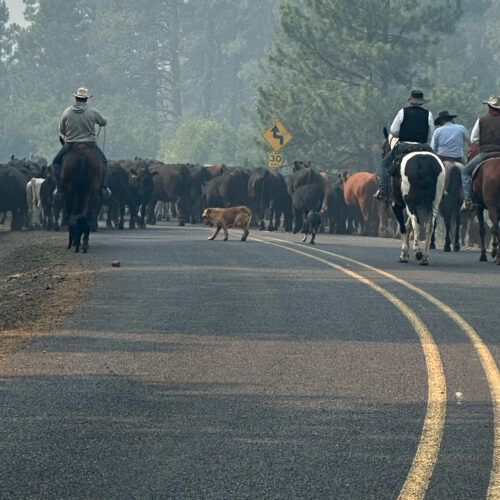
Burnt over cattle and lands: In southeast Oregon, grief-stricken ranchers are exhausted and frustrated by wildfires
Moving cattle out of a forest recently outside of Burns, Oregon. (Credit: Sabrina Maki) Listen (Runtime 4:33) Read Exhaustion and frustration: Ranchers in southeast Oregon are battling wildfire. Like many
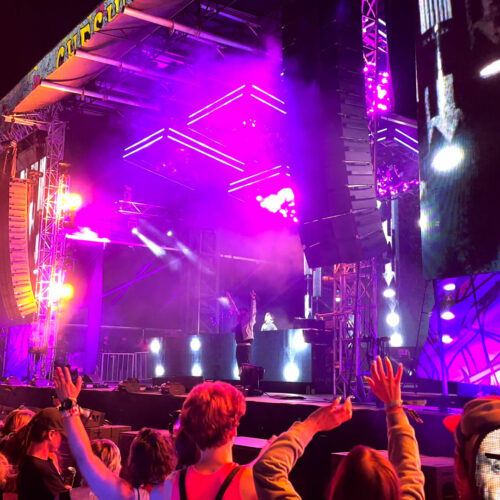
Fire at Odesza Gorge concert lasted for five minutes, law enforcement officials say
This file photo from June 17, 2023, shows Sub Focus performing at the Gorge Amphitheatre. (Credit: Northwest News Network file) Listen (Runtime :53) Read This past holiday weekend turned fiery
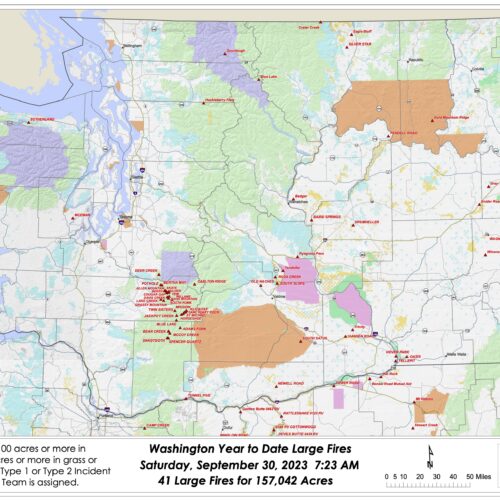
What impacts did wildfires have on the Northwest this summer?
Autumn has knocked on our doors and crossed our thresholds. With its arrival comes wetter, colder, darker days — perhaps some pumpkin-flavored treats as well — and hopefully, fewer wildfires. Heavy recent rainfall has dropped the wildfire potential outlook down to normal for the Northwest, according to the National Significant Wildland Fire Potential Outlook.
So, how did this summer fare compared to past fire seasons?

